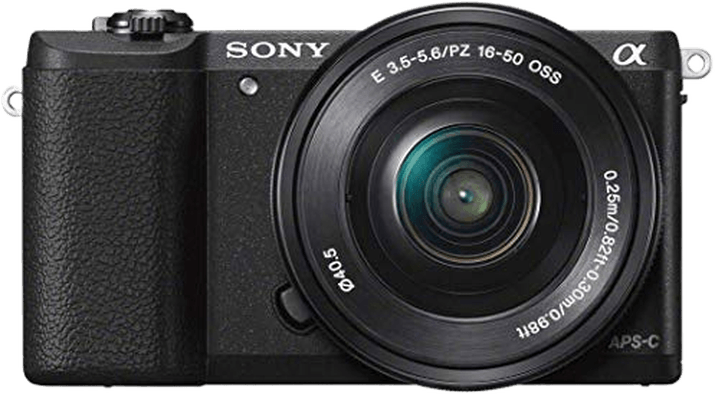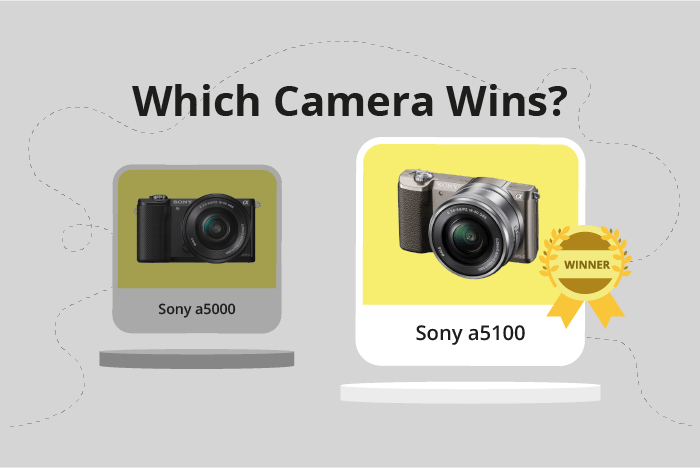Sony a5000 vs a5100 Comparison
Sony a5000

Sony a5100

The Sony a5100 emerges as the winner with a score of 60/100, while the Sony a5000 trails with a score of 51/100. Both cameras share some common specifications, such as being mirrorless and having the same dimensions (110 x 63 x 36mm). They were also both released in 2014, with the a5100 being announced in August and the a5000 in January.
The a5100 outperforms the a5000 due to its higher score, which reflects its overall better features and performance. However, the a5000 does have a slight advantage in terms of weight, being lighter at 269g compared to the a5100’s 283g. This could be a deciding factor for users who prioritize portability.
When considering the price, the a5100 is slightly more expensive at $550 compared to the a5000’s $500. Despite this, the a5100’s superior features and performance justify its higher price. Therefore, the Sony a5100 is the better choice for those seeking a more advanced camera, while the Sony a5000 may be suitable for users who value a lighter and more affordable option.
Sony a5000 vs a5100 Overview and Optics
The Sony a5100 outperforms the Sony a5000 in optics, scoring 66/100 compared to the a5000’s 60/100. Both cameras share several specifications, including a CMOS sensor type, Bionz X processor, APS-C sensor size, Sony E lens mount, and the absence of image stabilization.
The a5100’s superiority stems from its higher 24.3-megapixel count, compared to the a5000’s 20 megapixels. This increase in megapixels allows for more detailed and higher resolution photos. Additionally, the a5100 boasts a faster shooting speed of 6 frames per second, doubling the a5000’s 3.5 frames per second. This makes the a5100 more suitable for capturing fast-moving subjects or action shots. Moreover, the a5100 has a marginally better DXOMARK sensor score of 80, compared to the a5000’s 79, indicating a slightly better overall sensor performance.
On the other hand, the a5000 still holds its own in certain aspects. Its lower megapixel count may result in marginally faster processing times and smaller file sizes, which could benefit photographers with limited storage space or those who prioritize efficiency over maximum resolution.
Taking these factors into account, the Sony a5100 is the clear winner in optics, offering higher resolution images, faster shooting speeds, and slightly better sensor performance. The Sony a5000, while inferior in these aspects, may still appeal to those who prioritize processing speed and smaller file sizes. Ultimately, the choice between the two cameras depends on the specific needs and preferences of the photographer.
Sony a5000 vs a5100 Video Performance
The Sony a5000 emerges as the winner in terms of video capabilities with a score of 70/100, while the Sony a5100 scores 56/100. Both cameras share some common video features, including Full HD video resolution, maximum video dimensions of 1920 x 1080, and a maximum video frame rate of 60fps. However, there are notable differences that set the Sony a5000 apart as the superior option for video recording.
The winning feature of the Sony a5000 is its built-in time-lapse functionality. This allows users to create stunning time-lapse videos without the need for additional software or accessories. This feature alone makes the Sony a5000 a more versatile and convenient option for videographers, especially those interested in capturing the passage of time in their videos.
On the other hand, the Sony a5100 does not offer any notable advantages over the Sony a5000 in terms of video capabilities. Both cameras share the same video resolution, dimensions, and frame rate, leaving the a5100 without any distinct edge in this comparison.
Taking these factors into consideration, the Sony a5000 proves to be the better choice for videographers due to its built-in time-lapse functionality. This feature sets it apart from the Sony a5100 and adds value to the overall video capabilities of the camera. While the Sony a5100 may still be a viable option for video recording, it lacks the versatility and convenience offered by the Sony a5000’s time-lapse feature.
Sony a5000 vs a5100 Features and Benefits
The Sony a5100 outperforms the Sony a5000 in features, with a score of 54/100 compared to the a5000’s 37/100. Both cameras share some common specifications, such as a 3-inch screen size, the absence of GPS and Bluetooth, and the presence of WiFi connectivity. They also both have flip screens, which are useful for capturing images from various angles and for vlogging.
The a5100 excels in screen resolution and touchscreen capabilities. Its screen resolution is 921,600 dots, which is double that of the a5000’s 460,800 dots. This higher resolution allows for sharper and clearer image previews and menu navigation. The inclusion of a touchscreen in the a5100 further enhances the user experience, making it easier to navigate menus, adjust settings, and select focus points.
While the a5000 has a lower feature score, it does share some of the a5100’s valuable features, such as the flip screen and WiFi connectivity. However, it lacks the higher screen resolution and touchscreen capabilities of the a5100, which puts it at a disadvantage in terms of user experience and image preview quality.
Considering these factors, the Sony a5100 is the better choice for photographers looking for a camera with more advanced features and a higher-quality user experience. The a5000 may still be a viable option for those who prioritize budget and do not require the additional features offered by the a5100. Ultimately, the decision between these two cameras will depend on individual preferences and needs.
Sony a5000 vs a5100 Storage and Battery
The Sony a5000 and Sony a5100 both have a storage and battery score of 24/100, indicating no significant difference in this category. They share common specifications, including one memory card slot each, compatibility with SD/SDHC/SDXC cards, and Memory Stick Pro Duo cards. Both cameras use the NP-FW50 battery type and do not support USB charging.
Despite the identical scores, the Sony a5000 has a slight advantage in battery life, providing 420 shots compared to the Sony a5100’s 400 shots. This gives users more shooting time without needing to recharge or replace the battery. On the other hand, the Sony a5100 accepts Memory Stick Pro-HG Duo cards, offering users additional storage options.
Considering these points, the Sony a5000 offers better battery life, while the Sony a5100 provides more storage flexibility. However, the overall difference in storage and battery performance between these two cameras is minimal, and other factors should be considered when choosing between them.
Alternatives to the Sony a5000 and a5100
Are you still undecided about which camera is right for you? Have a look at these popular comparisons that feature the Sony a5000 or the Sony a5100:

